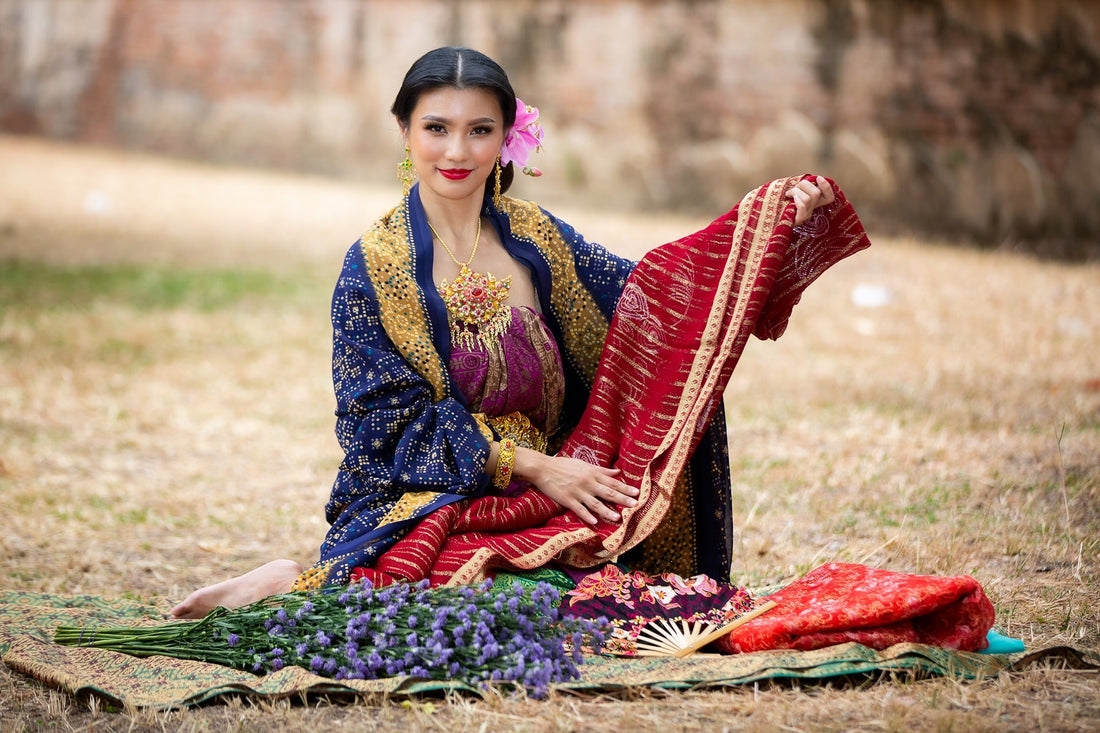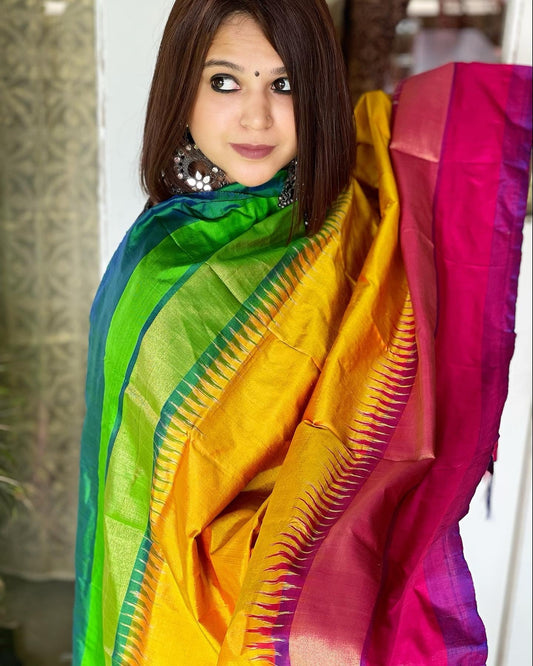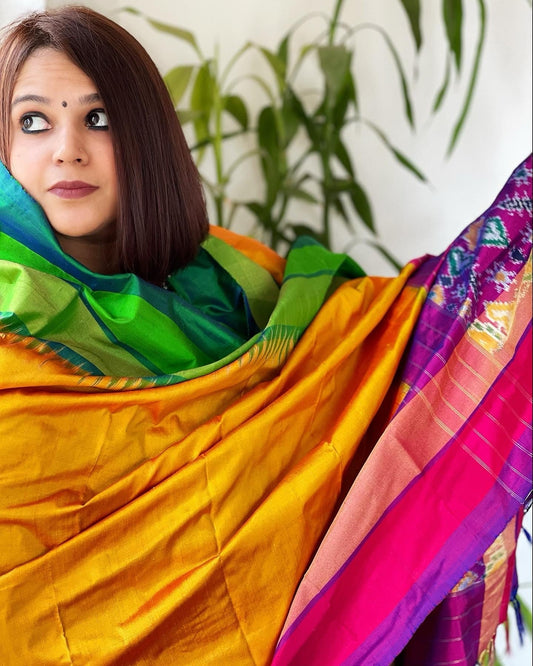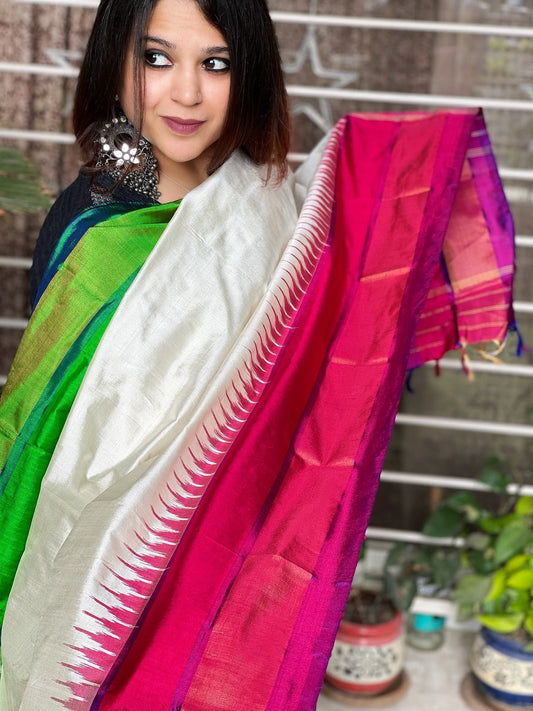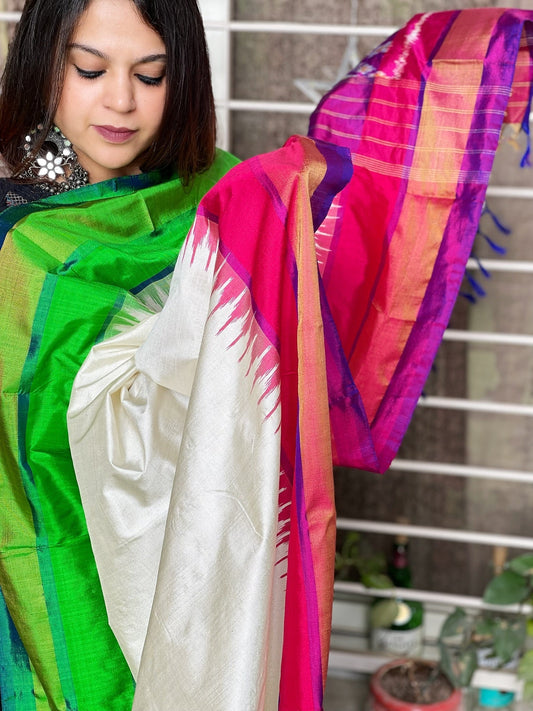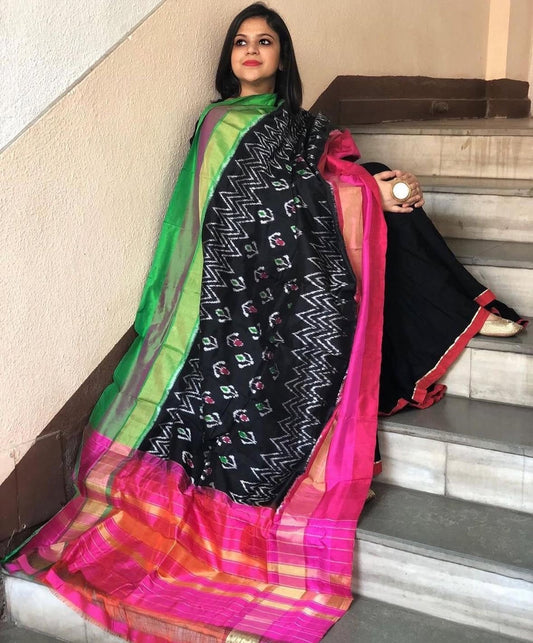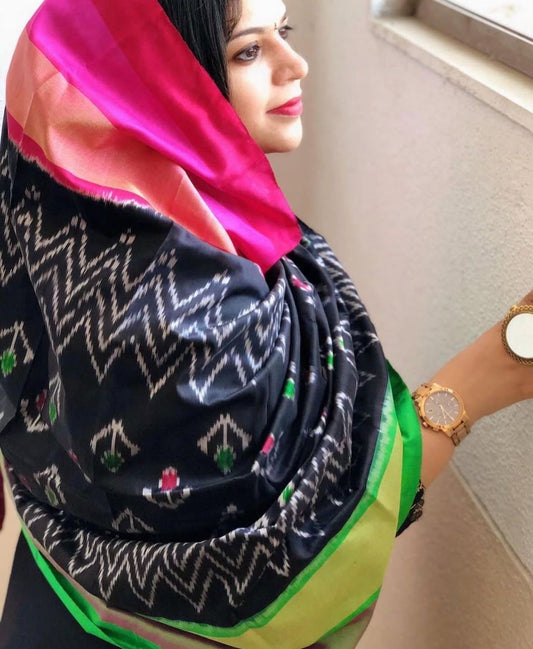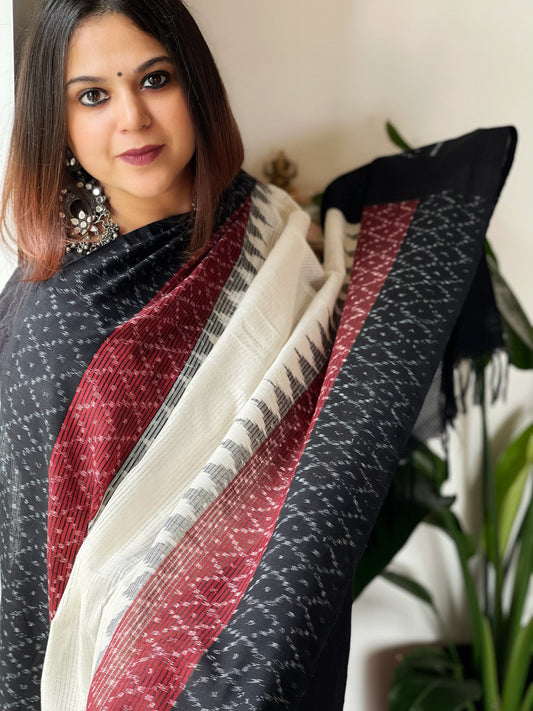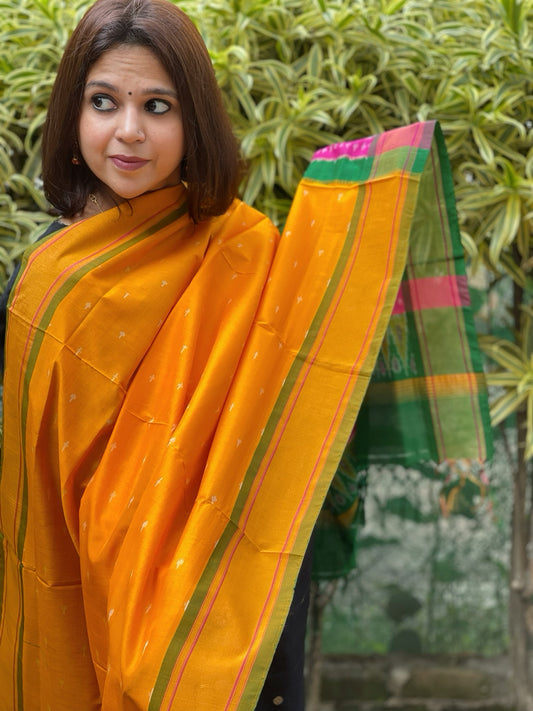Ikkat is a form of textile art celebrated for its intricate patterns and vibrant use of colours. Known for its unique dyeing technique, Ikkat stands out in the world of traditional fabrics, holding a special place in the hearts of textile enthusiasts and fashion connoisseurs alike. The name 'Ikkat' comes from the Malay-Indonesian expression 'mengikat', which means 'to tie', an apt description of the elaborate process used to create these stunning patterns.
Traditionally associated with several regions across India, including Gujarat, Odisha, and Telangana, Ikkat’s appeal reaches far beyond its geographical origins. Each piece of Ikkat tells its own story, woven into its threads over many days of diligent craftsmanship. The artisans, inheritors of this age-old skill, have been perfecting their craft over generations, often in small, close-knit communities that act as custodians of their cultural heritage.
At Masakalee, we recognise and celebrate the incredible talent and painstaking effort that goes into creating each Ikkat piece. As we delve deeper into the world of Ikkat, let us appreciate not just the beauty of the final product, but the journey and tradition embedded in its creation. Join us as we explore the intricate dance of threads that make Ikkat a timeless masterpiece of Indian craftsmanship.
Unraveling Ikkat: The Story Behind the Name
The term 'Ikkat' is derived from the Malay-Indonesian word 'mengikat', which means 'to tie' or 'to bind'. This name is a direct reference to the intricate process of tying and dyeing the threads before they are woven into fabric. This technique ensures that the dye only touches certain sections of the threads, thus creating unique, patterned designs once they are woven together. The craft is celebrated for these distinctive patterns, often resembling clouds due to their soft, blurry edges, which is a hallmark of the Ikkat technique.
As we delve into the art of Ikkat, it becomes evident that the name itself encapsulates the essence and key technique of this craft. The process involves binding sections of yarns with a tight wrapping in specific areas intended to resist dye. This preparation requires not only time and patience but also a keen eye for precision, which the skilled artisans have mastered over generations. Through this careful planning and complex layering of design and colour, the vibrant and abstract patterns of Ikkat come to life, distinguishing it from other textile arts.
Locating Ikkat: Tracing Its Roots in Indian States
Ikkat is prominent in several regions across India, each of which has developed a distinct style influenced by local culture and historical interactions. The craft primarily flourishes in Gujarat, Odisha, and Telangana, where it's more than just a textile tradition—it’s a cultural legacy. In Gujarat, Ikkat is often referred to as 'Patola' and is renowned for its intricate, double Ikkat technique. Odisha’s version, known as 'Sambalpuri Ikkat', showcases symbolic motifs inspired by local folklore and natural surroundings, while in Telangana, specifically around the town of Pochampally, the technique transforms into 'Pochampally Ikkat', famous for its geometric patterns and modern aesthetics.
These regions not only contribute to the rich diversity of Ikkat but also to its preservation and evolution. Each state's approach to Ikkat is a reflection of their historical, cultural, and artistic narratives, enriched further by the interactions with nearby cultures and global influences over the centuries. The artisans in these areas, with their deep-rooted skills, continue to innovate while preserving the traditional methods, ensuring that Ikkat remains relevant and cherished in the modern world. Through support and appreciation, we help keep this incredible art form vibrant and alive, connecting threads of the past with the present.
Timeless Threads: The Historical Journey of Ikkat
Ikkat is not just a craft; it's a historical narrative woven into fabric, with traces linking back over centuries, possibly as early as the 7th century. Originally from the regions now known as India and Indonesia, Ikkat made a significant impact due to its unique style and the complexity of its production. In India, this technique gained prominence when local rulers and wealthy patrons began to appreciate its beauty and significance in cultural attire, cementing its place in the annals of traditional Indian crafts.
Historically, the craft has been linked to various dynasties and rulers who encouraged textile trade and the flourishing of Ikkat. This craft was not confined to the aristocracy; it permeated through various layers of society, symbolising both a cultural and a practical asset. Artisans passed down their intricate knowledge and skills from one generation to another, preserving the traditional methods whilst continuously injecting personal and regional influences that allowed the craft to evolve without losing its heritage. This blending of tradition with personal creativity ensures that each Ikkat piece is not only historical but also uniquely contemporary.
Crafting Elegance: The Detailed Process of Making Ikkat
The making of Ikkat is a laborious process that demands precision, patience, and creativity from its artisans. It starts with the design phase, where patterns are conceptualised. Following design, the yarns are carefully measured, tied, and dyed to form the pattern's outline. Artisans tie resistant bindings around bundles of threads and immerse them in dye baths, a process repeated several times with different dyes to achieve multi-coloured patterns. The threads are then woven, aligning each thread perfectly to maintain the integrity of the design.
Typically, the completion of an Ikkat piece, depending on its complexity and the number of colours involved, can take several weeks to a few months. The effort intensiveness of Ikkat weaving is a testament to the artisans' dedication and skill. Indeed, the imperfections that occasionally manifest—slight misalignments or variances in colour density—not only highlight the handcrafted nature of Ikkat but also contribute to the authenticity and unique charm of each finished textile. These characteristics are celebrated, representing a human element that machine-produced textiles simply cannot replicate.
Embracing Craftsmanship at Masakalee
At Masakalee, we are dedicated to honouring and sustaining the rich tapestry of Indian craftsmanship, with Ikkat as a prime example. Our collection of Ikkat woven textiles brings traditional craftsmanship to modern wardrobes, offering you the chance to own a piece of India's celebrated textile heritage.
We invite you to explore the vibrant, intricate world of Ikkat. Each piece in our collection tells a story of history, culture, and artisanal talent, woven into every thread. Experience the distinct beauty and craftsmanship of Ikkat at Masakalee, where tradition meets contemporary style. Discover your perfect Ikkat dupatta piece today and carry forward a legacy of timeless elegance.

